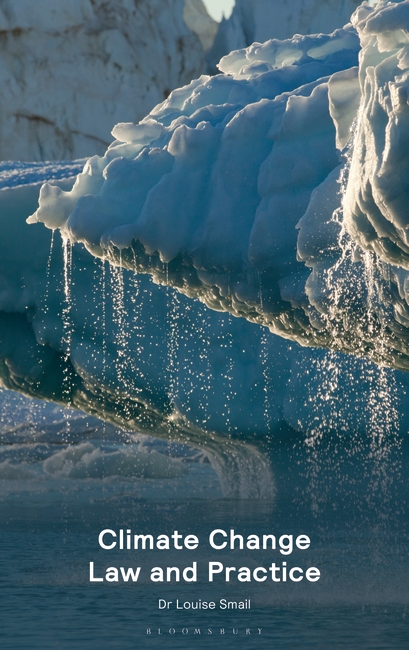Why We Should Pay Attention to Climate Change Law
by Dr Louise Smail
Why We Should Pay Attention to Climate Change Law
This is the first of several blogs highlighting the importance of climate change law and its role in combating climate change. It became clear when I was writing the book “Climate Change Law and Practice” that these were not pieces of legislation infrequently used or forgotten, but legislation which is actively being used to enforce carbon reduction, GHG reduction and addressing practices which increase the rate of climate change.
Climate change law is a crucial area of legal frameworks, regulations, and policies designed to tackle the causes and impacts of climate change. It covers a wide range of issues related to environmental protection, sustainability, and the reduction of greenhouse gas emissions.
There are now over 5,000 climate laws and policies worldwide, covering various aspects of climate change, including adaptation, mitigation, and resilience. These laws and policies are implemented across 196 countries, territories, and the European Union. The number of climate change laws has increased significantly over the years, reflecting global efforts to address climate change and its impacts through the legal system.
The Sabine database[1] in March 2024 was showing over 2,629 cases over 54 jurisdictions (excluding international or regional courts, tribunals, quasi-judicial bodies or other adjudicatory bodies.
[1] Sabin Centre report Maps Climate Cases in Global South https://climate.law.columbia.edu/news/new-sabin-center-report-maps-climate-cases-global-south#:~:text=As%20of%20March%202024%2C%20the,for%2040.7%25%20of%20those%20covered.
International Agreements
- United Nations Framework Convention on Climate Change (UNFCCC)[2]: This international treaty aims to address climate change and its impacts, serving as the foundation for global climate negotiations.
- The Paris Agreement[3]: Adopted in 2015, this accord seeks to limit global warming to well below 2 degrees Celsius above pre-industrial levels, with efforts to limit the temperature increase to 1.5 degrees Celsius.
[2] United Nations Framework Convention on Climate Change https://unfccc.int
[3] The Paris Agreement https://www.un.org/en/climatechange/paris-agreement
National Legislation
Many countries have enacted laws aimed at reducing greenhouse gas emissions and promoting renewable energy. Examples include:
- The Clean Air Act[4] (USA)
- The Climate Change Act[5] (UK)
- Nationally Determined Contributions (NDCs) under the Paris Agreement[6]
[4] The Clean Air Act https://www.epa.gov/laws-regulations/summary-clean-air-act
[5] The Climate Change Act https://www.legislation.gov.uk/ukpga/2008/27/contents
[6] Nationally Determined Contributions (NDCs) under the Paris Agreement https://unfccc.int/process-and-meetings/the-paris-agreement/nationally-determined-contributions-ndcs
Environmental Justice
Climate change law often intersects with issues of environmental justice, addressing the disproportionate impact of climate change on marginalized communities.
Litigation
Individuals, NGOs, and states may bring lawsuits for failure to act on climate change or to challenge government policies that contribute to greenhouse gas emissions. Such as Urgenda Foundation v State of Netherlands. (see a later blog)
Adaptation and Resilience Measures
Laws and policies aimed at increasing community resilience to the impacts of climate change, such as flooding, drought, and sea-level rise, as well as frameworks for disaster preparedness.
Economic Instruments
Implementation of carbon pricing mechanisms such as carbon taxes or cap-and-trade systems to incentivize reductions in emissions.
Public Participation and Transparency
Climate change law often emphasizes the importance of public participation, community input, and access to information in climate policies and decision-making processes.
Conclusion
Climate change law is an evolving field that reflects global efforts to combat climate change, regulate emissions, and promote a sustainable future. It encompasses a complex interplay of international, national, and local laws, requiring interdisciplinary approaches that involve science, economics, and social justice to effectively address the challenges posed by climate change.
Dr Louise Smail is the author of a number of environmental law books published by Bloomsbury Professional. Her new book, Climate Change Law and Practice, is available 05 June 2025.

